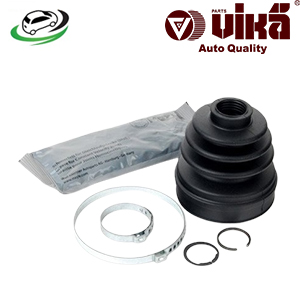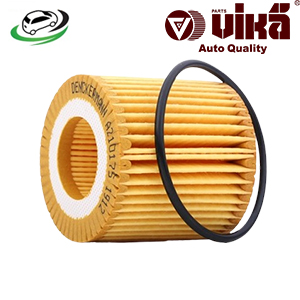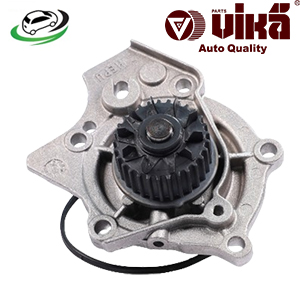Get VW Golf VI Water Pump (Without Housing) 06H121026CC in Kenya
A water pump is a vital component in a vehicle’s cooling system, responsible for circulating coolant from the radiator to the engine to prevent overheating. The water pump without housing refers to the core pump mechanism, excluding the outer casing or housing that encases and protects it. Understanding its components, functions, benefits, and maintenance is crucial for ensuring the optimal performance and longevity of the engine. Here’s a detailed overview of the water pump without housing.
Components of a Water Pump (Without Housing)
- Impeller: The heart of the water pump, the impeller is a rotor located inside the pump. It is typically made of metal or plastic and is designed with several blades or vanes that spin rapidly to move coolant through the engine and radiator.
- Shaft: The impeller is mounted on a shaft that is driven by a pulley connected to the engine’s crankshaft. This shaft is crucial for the transfer of rotational energy from the engine to the impeller.
- Bearings: The shaft rotates on bearings, which reduce friction and allow for smooth operation. High-quality bearings are essential for the longevity and efficiency of the pump.
- Seals: To prevent coolant from leaking out of the pump, seals are used around the shaft. These seals must withstand high temperatures and constant contact with coolant without degrading.
- Mounting Flange: The mounting flange is the part of the pump that connects to the engine block. It ensures the pump is securely attached and properly aligned with the other components of the cooling system.
Functions of a Water Pump
- Coolant Circulation: The primary function of the water pump is to circulate coolant from the radiator to the engine and back. This circulation is crucial for absorbing and dissipating the heat generated by the engine.
- Maintaining Optimal Engine Temperature: By ensuring a constant flow of coolant, the water pump helps maintain the engine at its optimal operating temperature, preventing overheating and ensuring efficient performance.
- Supporting Engine Efficiency: Proper engine temperature regulation contributes to better fuel efficiency and reduces the risk of engine damage due to overheating.
Benefits of a High-Quality Water Pump
1. Optimal Engine Temperature Regulation
Efficient Coolant Circulation
A high-quality water pump ensures efficient circulation of coolant throughout the engine. This consistent flow helps maintain the engine at its optimal operating temperature, preventing overheating and ensuring smooth performance.
Prevents Overheating
By effectively managing the engine temperature, a high-quality water pump reduces the risk of overheating. Overheating can cause severe engine damage, including warped cylinder heads and blown head gaskets.
2. Enhanced Engine Performance
Stable Engine Operation
With consistent coolant flow, the engine can operate smoothly and efficiently. Stable engine temperatures prevent fluctuations that can affect performance and fuel efficiency.
Improved Power Output
A well-maintained cooling system, supported by a high-quality water pump, allows the engine to run at its best. This results in improved power output and overall vehicle performance.
3. Extended Engine Life
Reduces Wear and Tear
By maintaining the correct operating temperature, a high-quality water pump reduces wear and tear on engine components. Overheating and temperature fluctuations can cause premature wear, leading to costly repairs.
Protects Engine Components
Consistent coolant flow prevents hot spots within the engine, protecting vital components such as the cylinder head, pistons, and valves from heat damage. This protection extends the lifespan of these components.
4. Fuel Efficiency
Optimal Combustion Conditions
Engines run most efficiently at specific temperatures. A high-quality water pump ensures that the engine remains within this optimal temperature range, promoting better fuel combustion and improving fuel economy.
Reduces Fuel Consumption
Efficient engine cooling reduces the load on the engine, minimizing fuel consumption. This benefit is particularly noticeable in stop-and-go traffic and during long drives.
5. Reliability and Durability
High-Quality Materials
High-quality water pumps are typically made from durable materials that resist wear, corrosion, and the harsh conditions of the engine bay. This durability ensures a longer service life and reliable performance.
Robust Construction
Superior manufacturing processes and quality control ensure that high-quality water pumps are robust and less prone to failure. This reliability is crucial for avoiding breakdowns and maintaining consistent engine performance.
6. Reduced Maintenance Costs
Fewer Repairs
A high-quality water pump reduces the likelihood of coolant leaks, overheating, and related issues. This reliability means fewer visits to the mechanic and lower maintenance costs over the vehicle’s lifespan.
Longer Replacement Intervals
Due to their durability and reliable performance, high-quality water pumps often have longer replacement intervals. This longevity means you won’t need to replace the water pump as frequently, saving on parts and labor costs.
7. Noise Reduction
Smooth Operation
High-quality water pumps operate more quietly due to better engineering and materials. This quiet operation enhances driving comfort and reduces the likelihood of annoying noises coming from the engine bay.
Minimizes Vibrations
Well-balanced and precisely manufactured components in high-quality water pumps reduce vibrations, contributing to a smoother and quieter engine operation.
8. Environmental Benefits
Reduced Emissions
Efficient engine cooling helps maintain optimal combustion conditions, which in turn reduces harmful emissions. By keeping the engine running efficiently, a high-quality water pump contributes to a cleaner environment.
Lower Carbon Footprint
Improved fuel efficiency from optimal engine temperature regulation means the vehicle consumes less fuel, leading to a lower carbon footprint. This benefit is important for environmentally conscious drivers.
9. Compatibility and Fit
Precise Fitment
High-quality water pumps are designed to meet or exceed OEM (Original Equipment Manufacturer) specifications, ensuring a precise fit and compatibility with your vehicle. This precision reduces installation issues and ensures seamless integration with the engine.
Reliable Performance
By matching or surpassing OEM standards, high-quality water pumps provide reliable performance that vehicle owners can trust. This reliability is crucial for maintaining the overall health and efficiency of the engine.
Installation and Replacement of a Water Pump
- Preparation: Before replacing the water pump, ensure the engine is cool, and the vehicle is securely lifted and supported. Drain the coolant from the radiator to prevent spills.
- Removing the Old Pump: Disconnect the battery to avoid any electrical issues. Remove any components obstructing access to the water pump, such as the timing belt or chain, pulleys, and hoses. Unbolt the old pump and carefully remove it.
- Preparing the New Pump: Inspect the new water pump for any defects. If required, transfer any necessary components, such as the gasket, from the old pump to the new one.
- Installing the New Pump: Place the new pump in position and secure it with bolts. Ensure that the gasket is properly seated to prevent leaks. Reattach the hoses, pulleys, and timing components.
- Refilling Coolant and Testing: Refill the cooling system with the appropriate coolant mixture. Reconnect the battery, start the engine, and check for leaks. Allow the engine to reach its operating temperature to ensure the new pump is functioning correctly.
Maintenance of a Water Pump
- Regular Inspections: Periodically inspect the water pump for signs of wear, such as leaks, noises, or wobbling. Early detection of issues can prevent more serious problems.
- Coolant Maintenance: Ensure the coolant is at the proper level and is regularly replaced according to the manufacturer’s recommendations. Contaminated or old coolant can damage the water pump and other cooling system components.
- Belt and Pulley Checks: Inspect the belts and pulleys connected to the water pump for wear and proper tension. A slipping or damaged belt can affect the pump’s performance.
- Seal and Bearing Maintenance: Over time, seals and bearings can wear out. Regularly check for leaks and unusual noises, which may indicate that these components need replacement.
Signs of a worn out Water Pump
1. Coolant Leaks
Visible Coolant Under the Vehicle
One of the most common signs of a failing water pump is a coolant leak. If you notice a puddle of coolant (typically a bright green, orange, or pink fluid) under your vehicle, it could indicate that the water pump’s seals are worn out and leaking.
Coolant on the Engine
Sometimes, leaks can cause coolant to drip onto other engine components. Check for wet spots or traces of coolant around the water pump area.
2. Overheating Engine
Rising Temperature Gauge
If your engine temperature gauge shows higher-than-normal readings, it could be a sign that the water pump is not circulating coolant effectively. Overheating can lead to severe engine damage if not addressed promptly.
Frequent Overheating
An engine that frequently overheats, especially under normal driving conditions, suggests a problem with the cooling system. The water pump is a likely culprit if overheating persists despite adequate coolant levels.
3. Unusual Noises
Grinding or Rumbling Sounds
A worn-out water pump can produce grinding or rumbling noises, often due to a failing bearing. These noises typically come from the front of the engine and can indicate that the pump’s internal components are deteriorating.
High-Pitched Whining
A high-pitched whining sound, especially when the engine is running, can indicate a problem with the water pump’s pulley or belt. This noise might be due to a loose or worn-out belt slipping on the pulley.
4. Steam from the Radiator
Steam Under the Hood
If you see steam coming from the radiator or under the hood while driving or after stopping, it could mean the engine is overheating. A failing water pump may not be circulating coolant properly, leading to steam production as the coolant boils.
5. Coolant Pump Pulley is Loose or Wobbly
Inspecting the Pulley
If the water pump pulley is loose or wobbles when you push it, the water pump bearings may be worn out. This condition can cause the pump to fail and should be addressed immediately.
6. Rust and Corrosion
Visible Rust
Rust and corrosion on the water pump’s exterior are signs of leakage. Leaks can cause coolant to accumulate around the pump, leading to rust formation. Inspect the water pump for rust, especially near the weep hole (a small hole designed to allow leaks to escape).
Corrosion Around the Pump
Corrosion around the water pump housing or the mounting area suggests that coolant has been leaking for an extended period, which can compromise the pump’s performance.
7. Inconsistent Coolant Levels
Frequently Adding Coolant
If you find yourself frequently adding coolant to the radiator or overflow tank, it may indicate a leak in the water pump. Consistent low coolant levels without visible leaks elsewhere in the system often point to a problem with the pump.
Coolant in Unusual Places
Finding coolant in places it shouldn’t be, such as the oil (milky oil) or exhaust (white smoke), can indicate severe issues, including a failed water pump, head gasket, or other critical components.
8. Engine Performance Issues
Poor Acceleration
Overheating can cause the engine to perform poorly. If the water pump is not functioning correctly, the engine might struggle to accelerate as it normally would due to excessive heat and reduced efficiency.
Stalling or Hesitation
In severe cases, an overheating engine can lead to stalling or hesitation. If the water pump fails completely, the engine may overheat to the point of causing damage or failure during operation.
Follow us on Facebook for more parts.



